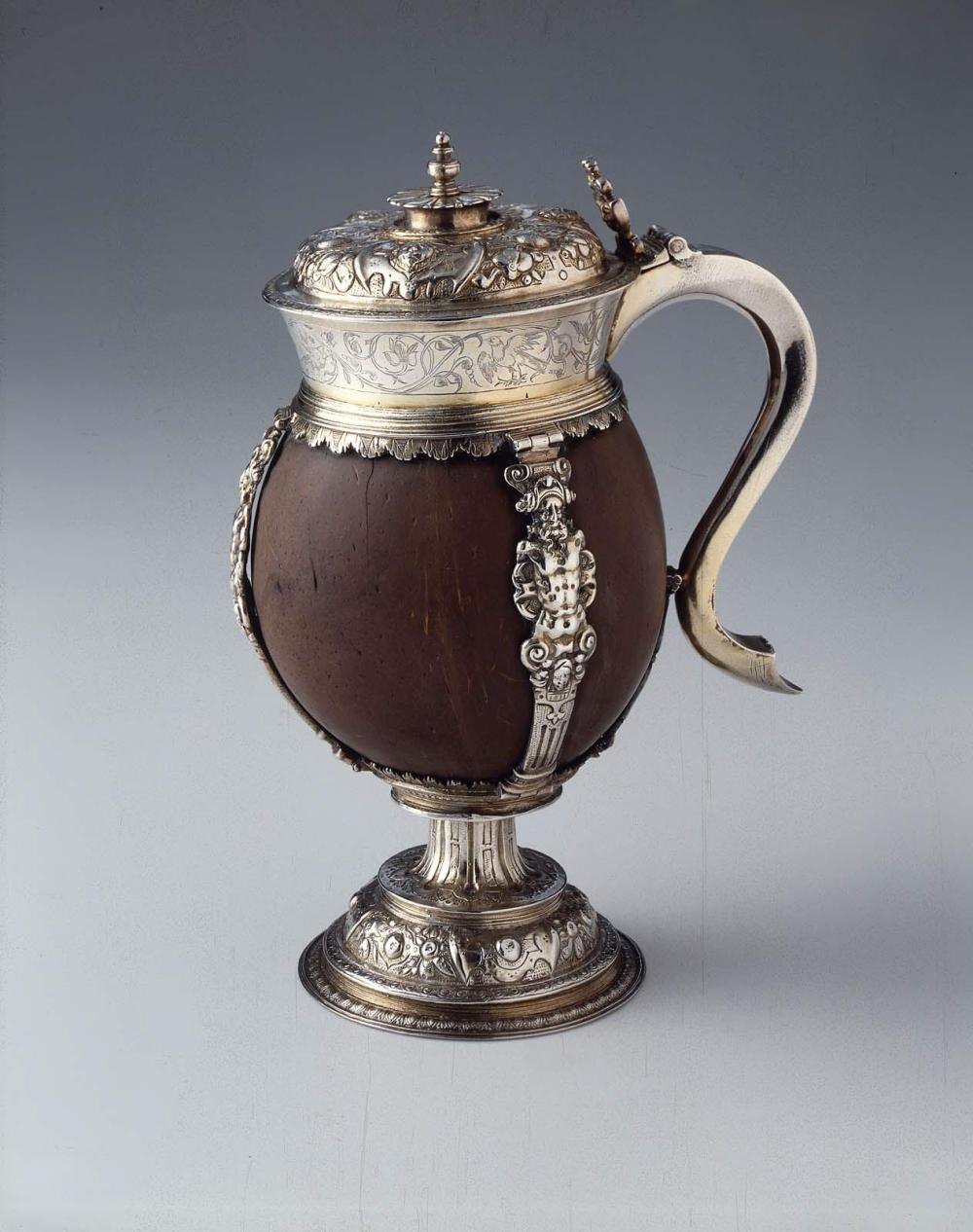Advanced Search 

Coconut Cup
Probably by: Hugh Kayle
English (London)
1574–75
Object Place: Europe, London, England
Medium/Technique
Coconut shell with silver-gilt mounts
Dimensions
H. 24 cm (9 7/16 in.); W. 17 cm (6 11/16 in.); Diameter (of rim) 10.5 cm (4 1/8 in.)
Credit Line
Anonymous gift in memory of Charlotte Beebe Wilbour (1833-1914)
Accession Number33.60
CollectionsEurope
ClassificationsSilver
Beginning in the thirteenth century, mounted coconut cups were highly prized in Europe, partly because it was believed that drinking from a coconut was beneficial to one's health. An English silversmith added a cover, handle, and foot to transform this plain coconut into an elegant drinking vessel.
DescriptionThe coconut shell is supported by a flaring fluted stem on a domed foot that is embossed with strapwork, fruit, and flowers. Projecting moldings have punched egg-and-dart decoration. The mount is secured with three hinged straps depicting caryatid figures that are attached at the top to a flaring rim engraved with birds entwined in foliage. The S-shaped handle is joined to the stem with a hinged strap and is soldered to the rim. It is engraved with birds and foliage on the spine and with crosshatching on the terminus. The domed cover is embossed with strapwork enclosing heads and clusters of fruit and has a punched rim. The baluster finial rests on a raised, rayed disk and is attached to the cover with later rivets. The cast thumbpiece depicts a grotesque face in symmetrical strapwork.
Construction:
The foot, stem, and cover are raised, fabricated, and embossed. The handle is formed and engraved. The thumbpiece, finial, and straps are cast. The foot has been reattached, and the finial is secured by later rivets. The surface is worn and pitted overall, and the gilding is flaking in several places on the cover. The short strap extending from the foot to the base of the handle has been repaired and may be a restoration.
Construction:
The foot, stem, and cover are raised, fabricated, and embossed. The handle is formed and engraved. The thumbpiece, finial, and straps are cast. The foot has been reattached, and the finial is secured by later rivets. The surface is worn and pitted overall, and the gilding is flaking in several places on the cover. The short strap extending from the foot to the base of the handle has been repaired and may be a restoration.
Marks
On rim near handle, on cover near finial, and on underside of base, maker's mark HK conjoined an ermine spot below in a shaped shield (similar to Jackson, 1921, p. 98; rev. ed. 1989, p. 95); leopard's head crowned; lion passant; date letter R (struck twice on base)
ProvenanceColonel Legh, High Legh Hall, Cheshire. March 22, 1906, Christie, Manson & Woods, London, lot 90, sold to Molineux. By 1928, Crichton Brothers, London; 1933, gift by anonymous donor in Memory of Charlotte Beebe Wilbour (1833–1914) to the MFA. (Accession Date: March 2, 1933)
